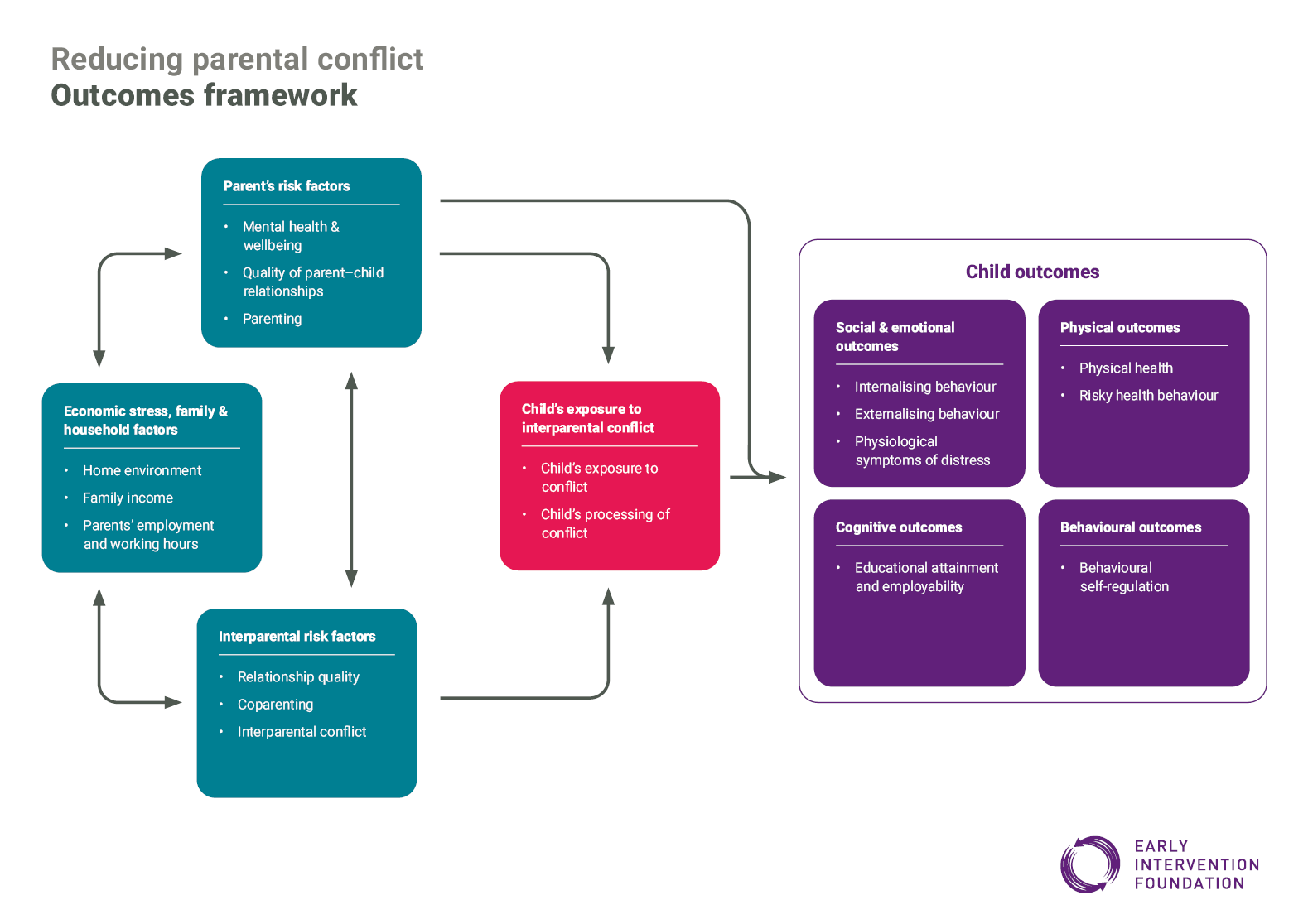Blog
Measuring what matters: updating the RPC outcomes framework for addressing parental conflict
Virginia Ghiara outlines the changes we've made to the RPC Outcomes Framework. With this updated version we've started linking the conceptual framework to more practical work, and have included a list of relevant measurement tools assessed by EIF that can be used to measure some risk factors and child outcomes.
With local authorities reporting a rise in parental conflict during the coronavirus pandemic, responding to conflict between parents has become an urgent issue in the UK. A key part of our work programme at EIF is to support local authorities to reduce the impact of such conflict, and in turn, to improve long-term outcomes for children.
Last year we published the first iteration of an outcomes framework specifically to address parental conflict. It outlined the relationships between different outcomes, including the links between parental conflict and outcomes for parents, children and the wider family. We are now pleased to be publishing an updated version of the framework, based on the feedback and suggestions we received from local leaders and their partners.
 The second version of the framework is less busy than the previous one. With the aim of creating as user-friendly a tool as possible. We have taken suggestions from local leaders and experts to simplify and reduce the range of included outcomes. One key point discussed with local authorities and their partners is that child outcomes can manifest in different ways through the life course. To simplify the framework, but reflect this complexity, the updated version of the outcomes framework does not split child outcomes into infancy, childhood and adulthood outcomes, but instead presents them in four categories (social & emotional, physical, cognitive, and behavioural outcomes).
The second version of the framework is less busy than the previous one. With the aim of creating as user-friendly a tool as possible. We have taken suggestions from local leaders and experts to simplify and reduce the range of included outcomes. One key point discussed with local authorities and their partners is that child outcomes can manifest in different ways through the life course. To simplify the framework, but reflect this complexity, the updated version of the outcomes framework does not split child outcomes into infancy, childhood and adulthood outcomes, but instead presents them in four categories (social & emotional, physical, cognitive, and behavioural outcomes).
Each child outcome is also described in the final section of the updated framework, to provide more details of how their manifestation can change from the antenatal period to adolescence. For instance, the final section of the outcomes framework shows that internalising behaviours can manifest with withdrawal and inhibition from infancy to adolescence, but can also develop into more severe symptoms, such as depression and suicidality, during childhood and adolescence.
To help local authorities navigate the outcomes framework, we have added a summary of the evidence explaining each arrow, and a definition of each outcome and risk factor. At the heart of the framework is children’s exposure to interparental conflict. This is a key element to target in order to improve outcomes for children, as evidence suggests that parental conflict exerts its major effects on children through such exposure, which can lead to the development of negative emotions, cognitions and representations of family relationships.
This updated version is still a conceptual framework. It can help local areas to think about what risk factors can influence parental conflict and child outcomes, but it is not designed to be a practical tool that local leaders can simply integrate as part of a local needs assessment, a local performance or data dashboard, or as part of service evaluation. We discussed with local leaders and their partners how to bring it closer to practice, and we will be working to develop more practical tools to support the framework.
With this updated version we have, however, started linking the conceptual framework to more practical work, and we have included a list of relevant measurement tools assessed by EIF that can be used to measure some risk factors and child outcomes. When reading our list, it is important to bear in mind that this is not a prescriptive list. There is a huge number of measures that can be used to assess these outcomes, and that those reported in our outcomes framework are only some of the possible measures that can be used in specific contexts and with particular target populations.
Although this is only a first small step forward, we will develop this tool to include actionable recommendations on how to embed these outcomes in local support to families, further guidance on how to select the best measurement tool considering your theory of change and target population, and we will share some of the effective strategies already used in some local areas. This more practical version will be part of a set of new RPC tools on needs assessment and model support pathways.
We intend to develop these practical tools in collaboration with local areas, commissioners and their partners. If you have any comments about what a practical framework should include, what aspects of the framework could be clarified, or if you have a good example on how to use a similar framework to share, please do get in touch.
